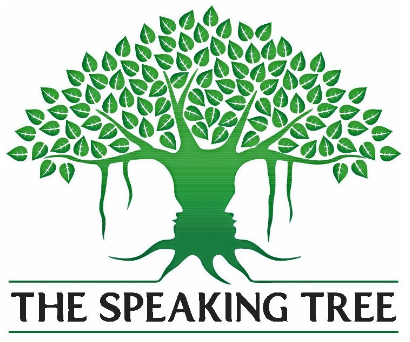Glory and
efficacy of Sannyasa Dharma
Transformation
into a higher ideal or reality is the goal of life. Transformation of inner
spiritual life is far more significant than transformation in outer secular
life. This renunciate life is common to all religious faiths and calls for the
renunciation of one’s possessions, and more importantly, ahamkara and
attachments (I ness and mine ness). The
fourth ashram (stage) of life greatly facilitates attaining the supreme goal of
realization of supreme reality and liberation; the previous three ashrams are
preparatory and gateway to sannyasa
This
inner transformation can be perceived most vividly in the life of Swami
Sivananda as a transformation from medication to meditation, from drug therapy
to yoga therapy, allopathy to namopathy (surrender to divine name), professionalism
to sagehood, social service to spiritual practice, intellect to intuition, self-sacrifice to self-enlightenment,
eradicating ailment to eradicating ignorance, biophysics to metaphysics, Apara
Vidya to Para Vidya, ignorance of self to the realization of self.
Dr.
Kuppuswami, who graduated from Tanjore Medical Institute as an aspiring,
vibrant Medico-published health journal namely Ambrosia for four years to
disseminate knowledge on health and hygiene, migrated to Malaysia and served as
a very altruistic, dedicated, and efficient medical practitioner serving mainly
farm laborers. His professional life can be seen as an ideal for the medical
profession. The book Jiva Brahma Aikya-Vedanta Rahasyam by Cuddapah
Swami Satchidananda lightened up inner spiritual aspirations, he dived deep
within and aspired to find the higher truth of life that transcends the
ever-changing phenomenal world and leads to eternal peace and bliss. He
renounced the glory & riches of secular life in a single stroke and pursued
a life of mendicant with untold miseries. It was divine dispensation &
blessings of God upon mankind that the aspiring disciple eventually met his
spiritual Master Swami Vishwananda on the bank of Mother Ganga at Rishikesh who
initiated him and invested with a robe of sannyasin and named him Swami Sivananda
meaning divine bliss. He also taught the secrets of Kaivalya (liberation) and the
mysteries of mahavakya revealing the oneness of the individual and Isvara. He
then lived a largely secluded life at Rishikesh interwoven with selfless
service, practiced austerities of the highest order with meditation as the keynote
of sadhana, and shone as a great yogi, saint, sage, and jivanmukta
Sannyasa
brought about an acme of inner transformation in his life and the emergence of intuitional
knowledge that was revealed to mankind through his pamphlets, letters, articles,
and hundreds of books. He was a strong votary of sannyasa and held that change
in heart must be accompanied by outer change. Scriptures-Sruti, Smriti, and
epics like Mahabharat describe the supreme glory and splendor of sannyasa. Sannyasa
is necessary even if one has attained Advaitic realization as exemplified by Ramkrishna
Dev, his Guru Totapuri, and rishi
Yajnavalkya. Sannyasa destroys all worldliness, evil samskaras and establishes
one in Advaitic Meditation. The ochre-colored cloth reminds one of one’s pledge
to lead an austere life in search of the divine every moment.
Swami
Sivananda gave sannyasa to countless number of disciples who excelled in
different facets of spirituality. One of his prime disciples and spiritual
successor Swami Chidananda calls it spiritual ministry. He regards Swami
Sivananda as a philosopher and realist who could inspire and awaken thousands
of seekers throughout the world. The uniqueness of his works lay in the
Indianization of thought, Atma dristi beholding mankind as immortal pure
soul, personal touch, and unification of divine teachings of different saints
and faiths. Swami Krishnananda regards him as an exponent of Vedanta philosophy
& personage rooted in the experience of God taught by Vedanta. Swami Chinmayananda
regards him as a seer, a sage, a prophet, and a guide all rolled into one.
Sannyasa
and Vedanta always go hand in hand. Wherever there is Vedanta, there must be
sannyasa of the highest type otherwise it becomes a mere intellectualism.
Sannyasa without Vedanta or Para-Bhakti becomes fruitless. When both melt into
one, there emerges a sage of supreme wisdom. Sannyasa empties the individual of
the ego and Vedanta fills it with positive truth, says Swami Sivananda.
The
distinction between secular and spiritual life ultimately merges into one
because spirituality refers to one and nondual substratum that pervades all
existence that reveals itself by one non-dual consciousness and is experienced
as bliss in proportion to the purity of one’s inner self. This can be
comprehended from Swami Sivananda’s saying how God came into my life in his
autobiography. He experienced God first in images worshipped by devotees, then
in gymnastic Harijan teacher, the quest for knowledge concerning the alleviation
of miseries, ailing & suffering patients, the realization of true innermost
self as indwelling consciousness, and finally as Virat form in whole existence.
‘Happiness
comes when the individual merges in God’, was his last dictated sentence. In
other words, this means that Self-knowledge is the solution to problems of
delusion and sorrow that emanate from ignorance of the self. He took
Mahasamadhi in 1963 but lives in his teachings and gospel of divine life
founded on integral yoga succinctly put as Serve, Love, Meditate, and Realize.
Jayant
B Dave
(Love
offering on the centenary of Initiation of Swami Sivananda into sannyasa order
on 1 June 2024)
Above article was published with some modification in speaking tree section of Times of India on 01.06.2024
Sannyasins should not intermingle with politics’
By Jayant B Dave
The transformation into a higher ideal or reality is the goal of life, as inner spiritual transformation is far more significant than outer secular life. This renunciate life is common to all religious faiths and calls for renunciation of worldly possessions and, more importantly, ahamkara, ego, and attachments. The glory of religions will be lost if we remove these hermits, who lead a life of renunciation and divine contemplation. They are harbingers of divine wisdom and peace. The fourth ashram, stage, of life called sannyas facilitates attaining realisation of Supreme reality and liberation; the previous three ashrams are preparatory and gateway to sannyas.
This inner transformation can be perceived most vividly in the lives of spiritual luminaries. Swami Sivanan daembodied this transformation from professionalism to sagehood, intellect to intuition, self-sacrifice to self-enlightenment,apara vidya to para vidya, and ignorance to realisationof Self.
Worldly greatness is nothing compared to spiritual enlightenment. Scriptures – sruti, smriti, and epics such as Mahabharat – describe renunciation’s supreme glory and splendour. Sannyas is necessary even if one has attained advaitic realisation, as exemplified by Ramakrishna, his Guru Totapuri, and Rishi Yajnavalkya. Sannyas sublimates worldliness and establishes one in abstract meditation. The ochre-coloured cloth reminds one of the pledge to lead an austere life in search of the Divine every moment.
Just as we have postgraduate students and research scholars in modern education, we need their counterparts to study and research subtleties of mind, meditation, and atman, the substratum behind orderly existence.
Sannyas and Vedant are inseparable. Wherever vedant is present, the highest form of sannyas must be found; otherwise, it becomes mere intellectualism. Sannyas without vedant or parabhakti is devoid of fruit. When both merge, a sage of supreme wisdom emerges. Sannyas empties an individual of ego, and vedant fills him with positive truth, says Swami Sivananda.
He recommended a combination of meditation and service to sannyasins. They purify the world even by staying in remote places through their thought vibrations. Being followers of the pure nivritti way of life, they should not intermingle much with politics or societal world except for guiding others on philosophy, religion, and spiritual subjects. His recommendation to renunciate was to sit in a quiet room for amoment. Enquire, cogitate, investigate, and realise the glory of living in Atman. Sannyasins should, on their part, be rooted in cosmic consciousness. They behold the oneness of Self, and the benefit to all beings is spontaneous. Adopting the life of a sannyasin when the quest for contemplating on Brahmn/ Self ripens or living life in the spirit of renunciation is essential. According to Swami Sivananda, happiness comes when an individual merges with God. Self-knowledge is the solution to multifarious problems in life.
June 1 marks the centenary of Swami Sivananda’s sannyas diksha


No comments:
Post a Comment